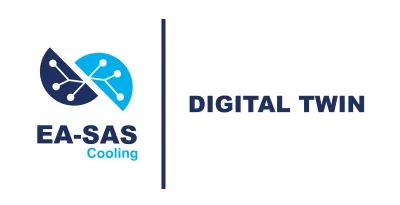Energy Advice
EA-SAS Cooling
EA-SAS Cooling is a Digital Twin of the cooling/refrigeration system, designed to reduce electricity consumption through continuous system monitoring and automatic Set Points control.
Digital Twin for various system configurations:
- Different refrigerants: ammonia, CO2, HFCs (hydrofluorocarbons, e.g. freon);
- Screw, reciprocating and other compressors;
- Dry expansion and liquid overfeed systems;
- Various types of condensers and evaporators;
- Single compression and multi-compression cycles;
- Different applications: freezing, chilling, cold storage, air conditioning, air drying and other.
EA-SAS is the answer to:
- How to reduce electricity consumption?
- How to control Cooling/Refrigeration process according to variable product quantity and product type?
- How to track the real efficiency indexes (EER, COP) online and know the real-time state of the system?
- How to determine actual minimal costs needed to ensure technological requirements and avoid surplus energy consumption?
EA-SAS Cooling functionality:
- Calculation and tracking of refrigeration energy consumption;
- Predicting refrigeration demand;
- Calculation and tracking of Compressors operation state and KPI’s: COP, isoentropic and volumetric efficiency and other;
- Calculation and tracking of Condenser efficiency;
- Calculation and tracking of Evaporators efficiency;
- Required evaporation temperature control Set Point recommendations;
- Required condensing temperature control Set Point recommendation;
- Equipment deterioration monitoring;
- Demand-response and price-based optimization.
Benefits:
- Constant refrigeration system maintenance is ensured without additional costs for qualified personnel;
- Measures for reducing Refrigeration system energy consumption are determined;
- Refrigeration system efficiency is automatically calculated and tracked;
- User is informed about a tendentious drop of refrigeration system efficiency;
- Presented information about equipment deterioration helps to prevent larger failures, plan maintenance repairs and costs.
- Routine equipment maintenance (such as condenser cleaning, ice release from evaporators) is recommended based on actual need;
- Actual cooling usage is tracked and compared with historical data, the user is notified about surplus cooling consumption;
- Important information that helps to justify needed refrigeration system investments (an instalment of variable frequency drives, new or more powerful condensers, and others) is collected.



